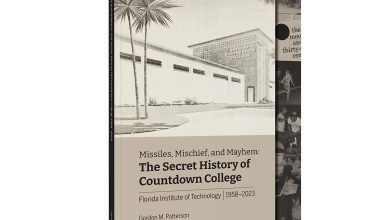A Man on the Moon
By Dr. Robert Taylor, Head of the Humanities and Communication Department and Professor of History
Last week Americans buried Neil Armstrong, the first human to set foot on another celestial body. The nation paused to mourn a true hero, and reflect on a past era for us as a nation. Perhaps we all should stop for a minute and think about what his passing means.
Neil Armstrong, by fate, chance, or pure luck, became a symbol of what Americans could achieve in the tumultuous decade of the 1960s. President Kennedy challenged the county to do something never done before- send a man to the moon and return him safely to Earth by 1970.
The scientific and engineering problems that had to be overcome seemed mountainous, but a can-do spirit pushed those in the space program to do things they never imagined that they could.
Even kids, like me, got caught up in the excitement of Gemini and Apollo launches. Mom went so far as to make steak and eggs for breakfast because I heard that’s what astronauts ate on launch days in a sunny place called Florida.
We all watched on that hot summer night in 1969 when Neil and “Buzz” Aldrin guided their lunar module toward the surface. Despite the then- high technology, a successful landing depended on a pilot at the controls and not a pre-programmed computer. Armstrong reminded people that humans still mattered, and that it was “one small step for Man” and not for a machine.
For me, Neil Armstrong became an even bigger hero after his walk on the Moon and the victory parades on Earth. Though living in a celebrity mad culture, he did not “cash in” on his fame, but lived a quiet life as an engineering professor. How inspired his students must have felt when Professor Armstrong told them to dare and dream big dreams! Heroes of his type are a rarity and not likely to come along very often. Rest in peace Neil Armstrong.





